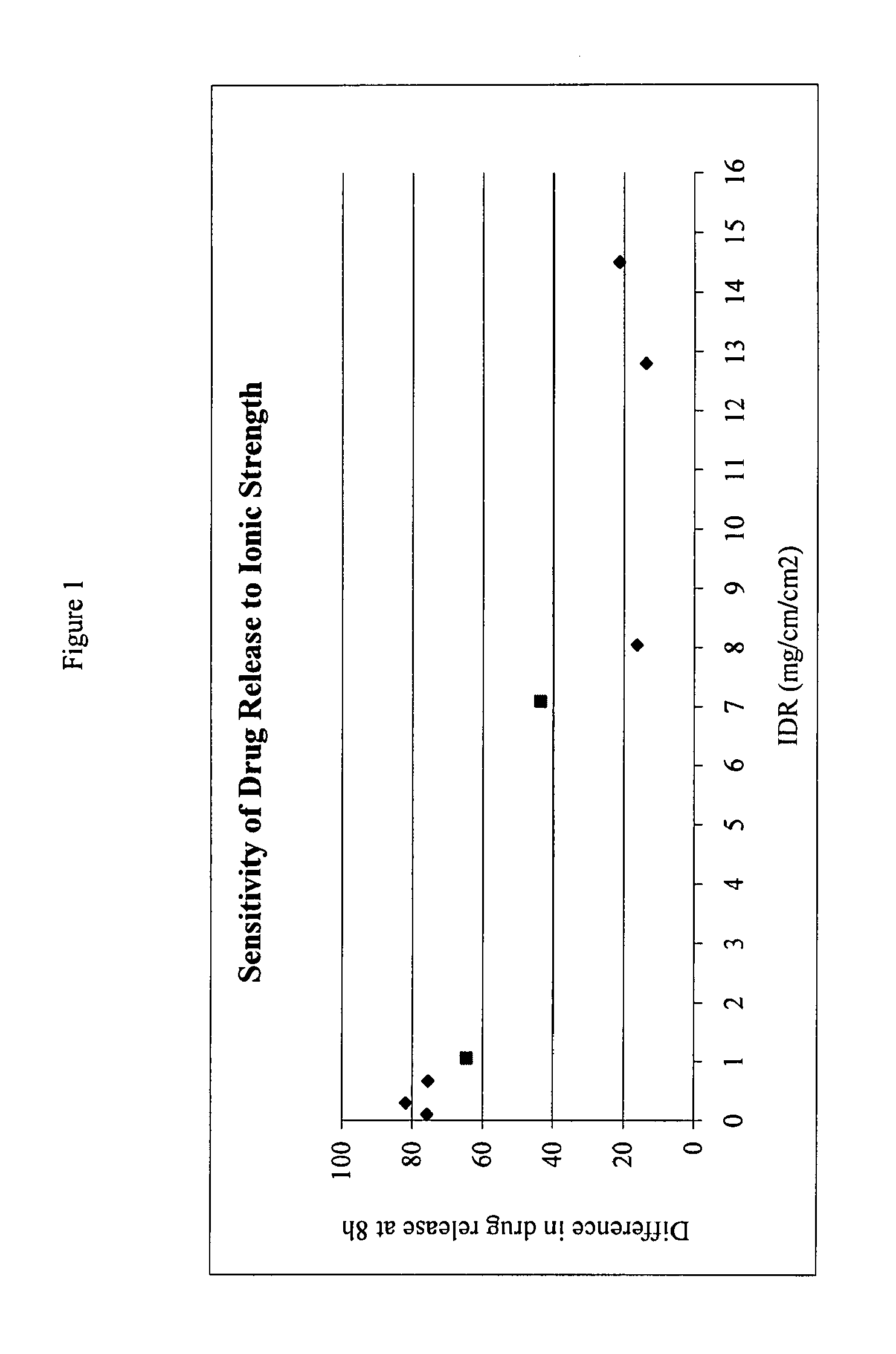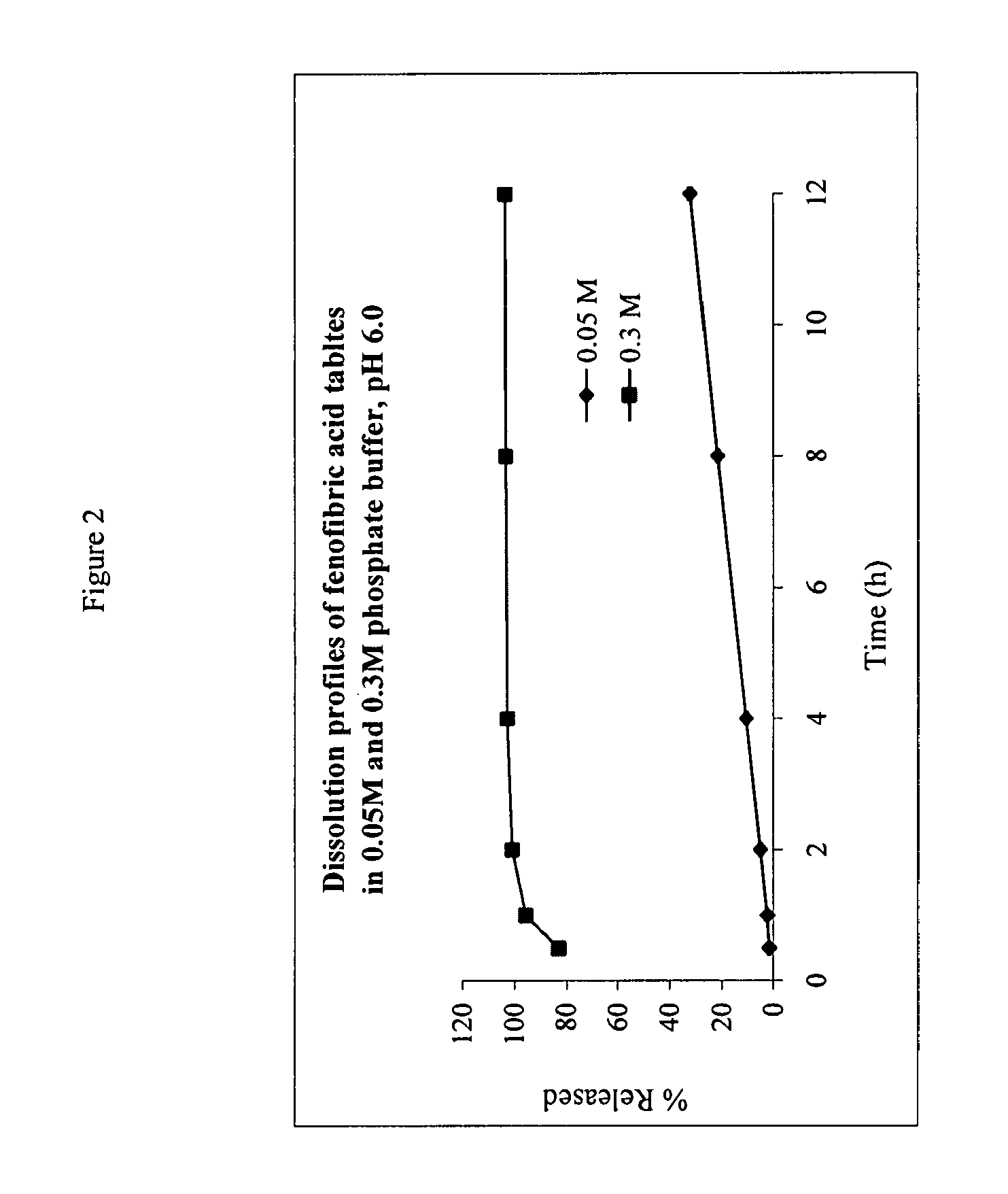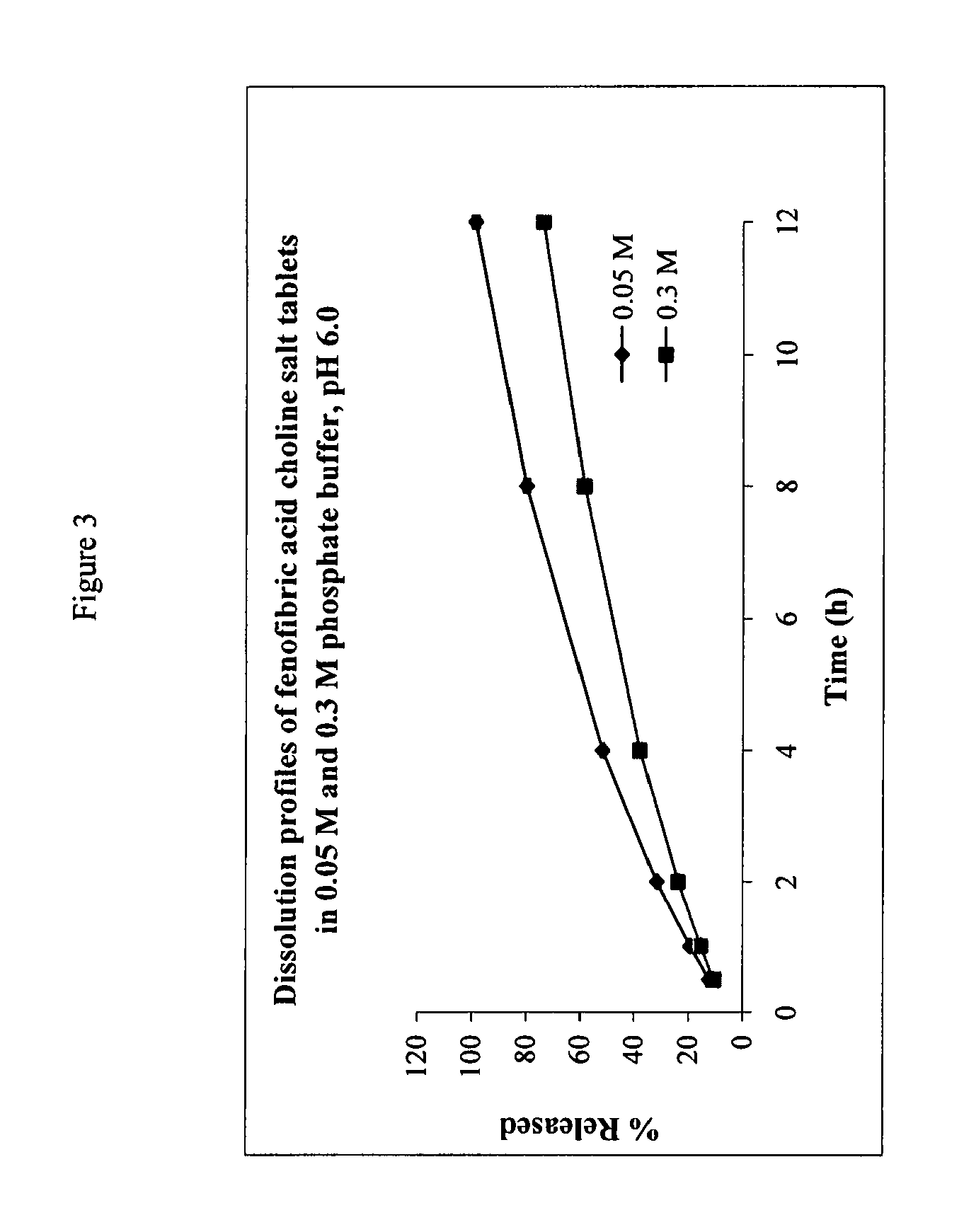Pharmaceutical formulations
a technology of pharmaceutical formulations and dosage forms, applied in the direction of drug compositions, biocides, metabolic disorders, etc., can solve the problems of low bioavailability of these compounds (i.e., their absorption in the digestive tract), undesirable food effect, and low bioavailability of compounds, etc., to achieve the effect of affecting the robustness of the formulation
- Summary
- Abstract
- Description
- Claims
- Application Information
AI Technical Summary
Benefits of technology
Problems solved by technology
Method used
Image
Examples
example 1
Tablet Preparation
[0087]The intra granular ingredients were added into a granulator (or mixer) and dry mixed followed by gradual addition of a suitable amount of water to the granulator and granulating until optimal granulation was achieved. The granulation was then wet massed if necessary for an additional period of time and then dried in an oven or a fluid bed dryer. The dried granules were using the fitzmill or manually screened using a mesh. The Silicon Dioxide and HPC Exf were screened through a 40-mesh screen. The milled granules, and screened silicon dioxide and HPC were charged into a V-blender and blended for 5 minutes at ˜26 rpm. The SSF was screened through a 40-mesh screen. The screened SSF was added into the blender and blended for additional 5 minutes. The granules were weighed and compressed using the rounder tooling into a table with target weight of 275 mg / tablet. Target tablet hardness was ˜20 SCU.
example 2
Solubility Determination
[0088]Solubility values of fenofibric acid salts in water were determined at 25° C. The salts were weighed into glass vials and water was added. The suspensions were rotated from end to end for about 2 days in a 25° C. water bath. The pH of the suspensions was measured. The residual solid was then removed via filtration through a 0.45 μm PTFE membrane filter. The resulting saturated solution was diluted appropriately into the HPLC mobile phase, and analyzed by the HPLC assay described below (Table 3). The powder x-ray diffraction pattern of the collected residual solid was recorded at the end of experiment.
[0089]
TABLE 3HPLC Assay for Fenofibric Acid.ParametersConditionsColumnWaters Symmetry Shield ®, RP18, 5 μm, 250 × 4.6 mmAutosampler TemperatureAmbientColumn Temperature ~35° C.Flow Rate ~1 ml / minDetection Wavelength 286 nmInjection Volume 25 μlMobile phase A 25 mM K2HPO4 in water, pH adjusted to 2.5 with H3PO4Mobile phase BAcetonitril...
example 3
Intrinsic Dissolution Rate (IDR)
[0090]The IDR of salts of fenfibric acid were determined in 50 mM sodium citrate buffer at pH 4.0 or pH 6.8 (μ=0.155 M with NaCl).
[0091]Pellets of the salts were prepared by compressing ca. 100 mg of the compound in a stainless steel die under 1300 pounds force with a dwell time of one minute. The die containing the tablet was submerged in 400 mL of the dissolution medium at 37° C. The solution was stirred by a paddle at =60 rpm. At each time point, 3 mL of sample was withdrawn and filtered. After discarding the first half of the filtrate, the remainder was collected and assayed by HPLC method above. The total volume of the dissolution medium was kept at a constant by replenishing the lost volume at each data point with fresh buffer at 37 C.
TABLE 4Differ- Solubility% in 0.05 M % in 0.3 M enceSalt(mg / ml)IDR*@ 8 h@ 8 h@ 8 hCholine>30014.5080.058.621.4Diethanolamine>25012.8069.255.513.7Ethanolamine19.08.0566.350.116.2Metformin16.17.0955.298.843.6Procaine...
PUM
 Login to View More
Login to View More Abstract
Description
Claims
Application Information
 Login to View More
Login to View More - R&D
- Intellectual Property
- Life Sciences
- Materials
- Tech Scout
- Unparalleled Data Quality
- Higher Quality Content
- 60% Fewer Hallucinations
Browse by: Latest US Patents, China's latest patents, Technical Efficacy Thesaurus, Application Domain, Technology Topic, Popular Technical Reports.
© 2025 PatSnap. All rights reserved.Legal|Privacy policy|Modern Slavery Act Transparency Statement|Sitemap|About US| Contact US: help@patsnap.com



